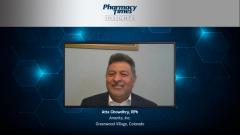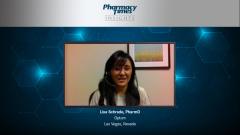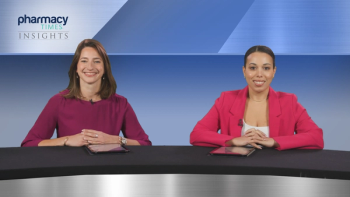
Standard of Treatment for Hemophilia A
The standard treatment strategies for hemophilia A are explored by Lisa Schrade, PharmD.
Episodes in this series

Lisa Schrade, PharmD: Hemophilia A affects about 1 in 5,000 male births and there are roughly a little over 30,000 individuals that are affected by the bleeding disorder.
The prognosis is so much better now than it was 30 or 40 years ago. There have been so many more advancements in therapy, so these individuals can lead the same healthy lives as people who aren’t afflicted with this bleeding disorder. So, it’s very positive.
The standard of care is streamlined specifically for that individual patient. The interesting thing about hemophilia is that we really can’t silo patients as a group into 1 therapy class. There are guidelines that we utilize for the initiation of therapy, but for severe hemophilia patients, the therapy of choice is to automatically try to get them on prophylaxis.
As far as the relevance of factor 9 in relation to bleeding disorders, you do need factor 8 to activate factor 9 and get to factor 10. It’s a whole series of events that happens between these proteins. So, if you have deficits in one, it cascades down the line, and affects everything to help with the clot formation. Another very important component of bleeding disorder patients is to make sure that everything is in balance to reach hemostasis.
The 3 available prophylaxis options are the plasma-derived, recombinant factor, and the bispecific antigen. The plasma-derived comes straight from a human source. The recombinant products are manmade, and the bispecific antigen is the newest one on the market, which mimics the activity of factor 8 but isn’t a true protein replacement. As far as which therapy to go with, there are different guidelines and suggestions. Different prescribers will have different preferences.
Back in the 1960s and 1970s, when we had problems with contaminated products, the plasma-derived, we had concerns because of the screening processes. But nowadays, with all the different techniques that they have in place, plasma-derived products are just as safe as recombinant products. We do worry and are concerned with inhibitor development with recombinant products. We see less of that with plasma-derived. And then the caveat to that is the bispecific antigen where there’s less chance of inhibitor development. It’s just as efficacious, if not more so, and we have better compliance because of the ease of administration, and the less demanding intervals for therapy.
The prophylaxis treatment selection comes down to the coordination of care with the provider. We can make suggestions for that, but ultimately, it’s the provider who’s going to be following the patient and determine what’s in their best interest. With the patient, it’s really what drives the choice. With the younger infants, we want to get them on prophylaxis as soon as possible. Emicizumab seems to be the most beneficial prophylaxis for families. It’s less invasive. It’s easier to administer. There’s less of a demand on families. As far as the storage of medication, it doesn’t take up as much room.
The MASAC [The National Hemophilia Foundation’s Medical and Scientific Advisory Council] guidelines suggest that patients be initiated with recombinant therapy as the first line or first choice of the available products.
There’s different things that we take into consideration. For our younger patients, it’s always hard to try to access using IV [intravenous therapy] administration of factor products. That’s why we tend to suggest for ease of use to go with the emicizumab
For newly diagnosed patients, we don’t want them to develop the inhibitor. Some prescribers, if they choose to go with factor products, they will choose to go with plasma-derived vs recombinant products because of the risk of inhibitor development, which seems to be a little more with the recombinant products. Even with the risk of potential contaminants in the plasma-derived, the screening process is so amazing now that we’re not concerned about that to not initiate therapy with plasma-derived, if the emicizumab is not an option.
Transcript edited for clarity.
Newsletter
Stay informed on drug updates, treatment guidelines, and pharmacy practice trends—subscribe to Pharmacy Times for weekly clinical insights.






















































































































































































































